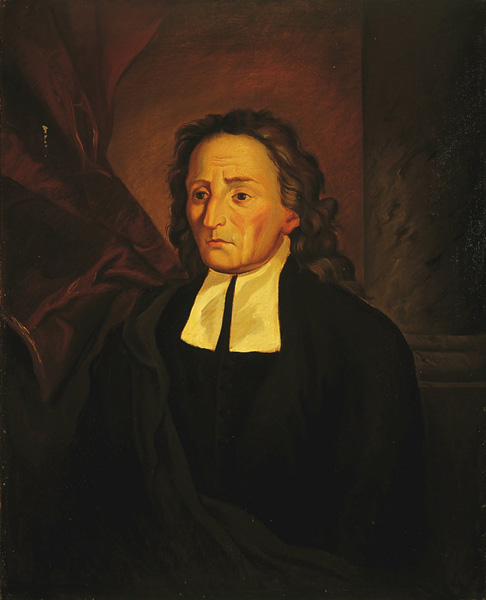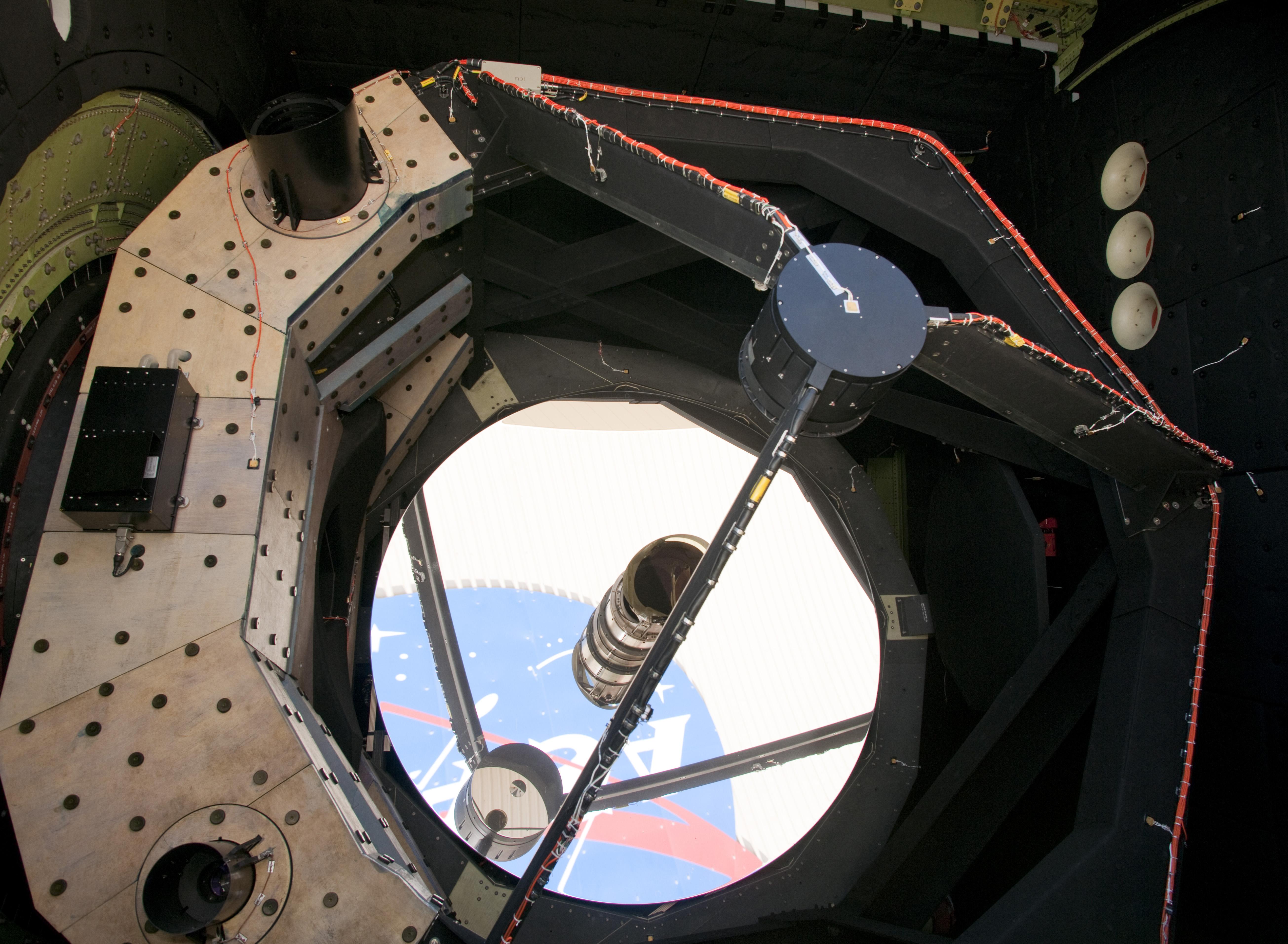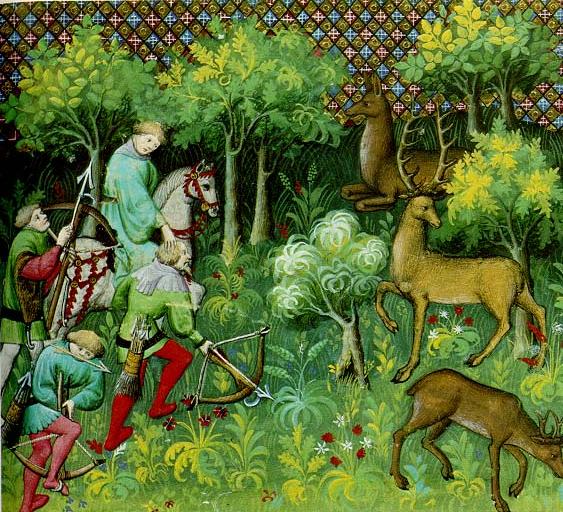|
1668 In England
Events from the year 1668 in England. Incumbents * Monarch – Charles II Events * 17 January – George Villiers, 2nd Duke of Buckingham, fights a duel with Francis Talbot, 11th Earl of Shrewsbury (with whose wife he was having an affair) in which the latter is fatally wounded and a second is killed. * 23 January – England signs the Triple Alliance with the Dutch Republic and Sweden. * 13 February – Charles II mediates a peace treaty between Spain and Portugal. * 13 April – John Dryden becomes Poet Laureate. * April (traditional date) – Actress Nell Gwyn becomes the King's mistress. * 7 May – Queen Catherine miscarries. * May – The King's former mistress, Barbara Castlemaine, leaves the Court and is pensioned. * 21 September – The British East India Company takes over Bombay under a Royal Charter of 27 March. * December – William Penn imprisoned for nearly 8 months in the Tower of London for writing a pamphlet attacking Trinitarian doctrine. Undated * The Fo ... [...More Info...] [...Related Items...] OR: [Wikipedia] [Google] [Baidu] |
1668
Events January–March * January 23 – The Triple Alliance of 1668 is formed between England, Sweden and the United Provinces of the Netherlands. * February 13 – In Lisbon, a peace treaty is established between Afonso VI of Portugal and Carlos II of Spain, by mediation of Charles II of England, in which the legitimacy of the Portuguese monarch is recognized. Portugal yields Ceuta to Spain. * c. February – The English Parliament and bishops seek to suppress Thomas Hobbes' treatise ''Leviathan''. * March 8 – In the Cretan War, the navy of the Republic of Venice defeats an Ottoman Empire naval force of 12 ships and 2,000 galleys that had attempted to seize a small Venetian galley near the port of Agia Pelagia. *March 22 – Notable Privateer Henry Morgan lands in Cuba to raid and plunder the inland town of Puerto del Príncipe during the latter stages of the Anglo-Spanish War (1654–1660). * March 23 – The Bawdy House Riots of 1668 ... [...More Info...] [...Related Items...] OR: [Wikipedia] [Google] [Baidu] |
British East India Company
The East India Company (EIC) was an English, and later British, joint-stock company that was founded in 1600 and dissolved in 1874. It was formed to Indian Ocean trade, trade in the Indian Ocean region, initially with the East Indies (South Asia and Southeast Asia), and later with East Asia. The company gained Company rule in India, control of large parts of the Indian subcontinent and British Hong Kong, Hong Kong. At its peak, the company was the largest corporation in the world by various measures and had its own armed forces in the form of the company's three presidency armies, totalling about 260,000 soldiers, twice the size of the British Army at certain times. Originally Chartered company, chartered as the "Governor and Company of Merchants of London Trading into the East-Indies," the company rose to account for half of the world's trade during the mid-1700s and early 1800s, particularly in basic commodities including cotton, silk, indigo dye, sugar, salt, spices, Potass ... [...More Info...] [...Related Items...] OR: [Wikipedia] [Google] [Baidu] |
James II Of England
James II and VII (14 October 1633 – 16 September 1701) was King of England and Monarchy of Ireland, Ireland as James II and King of Scotland as James VII from the death of his elder brother, Charles II of England, Charles II, on 6 February 1685, until he was deposed in the 1688 Glorious Revolution. The last Catholic monarch of Kingdom of England, England, Kingdom of Scotland, Scotland, and Kingdom of Ireland, Ireland, his reign is now remembered primarily for conflicts over religion. However, it also involved struggles over the principles of Absolute monarchy, absolutism and divine right of kings, with his deposition ending a century of political and civil strife by confirming the primacy of the English Parliament over the Crown. James was the second surviving son of Charles I of England and Henrietta Maria of France, and was created Duke of York at birth. He succeeded to the throne aged 51 with widespread support. The general public were reluctant to undermine the principle ... [...More Info...] [...Related Items...] OR: [Wikipedia] [Google] [Baidu] |
Fox Hunting
Fox hunting is an activity involving the tracking, chase and, if caught, the killing of a fox, normally a red fox, by trained foxhounds or other scent hounds. A group of unarmed followers, led by a "master of foxhounds" (or "master of hounds"), follow the hounds on foot or on horseback. Fox hunting with hounds, as a formalised activity, originated in England in the sixteenth century, in a form very similar to that practised until February 2005, when a law banning the activity in England and Wales came into force. A ban on hunting in Scotland had been passed in 2002, but it continues to be within the law in Northern Ireland and several other jurisdictions, including Australia, Canada, France, Republic of Ireland, Ireland and the United States. The sport is controversial, particularly in the United Kingdom. Proponents of fox hunting view it as an important part of rural culture and useful for reasons of Conservation movement, conservation and pest control, while opponents argue ... [...More Info...] [...Related Items...] OR: [Wikipedia] [Google] [Baidu] |
Fabian Stedman
Fabian Stedman (1640–1713) was an English author and a leading figure in the early history of campanology, particularly in the field of method ringing. He had a key role in publishing two books ''Tintinnalogia'' (1668 with Richard Duckworth) and ''Campanalogia'' (1677 – written solely by him) which are the first two publications on the subject. He is also regarded as being a pioneer in the branch of mathematics known as Group theory. Life Fabian Stedman was born in Yarkhill, Herefordshire, the third son to Reverend Francis Stedman. His father Francis Stedman was born in Aston Munslow, Shropshire in 1598, who took Holy Orders at Yarkhill in 1625. Francis had seven children by two wives. The eldest was Francis Junior who followed his father and became Rector of the parish of Stoke Lacy, Herefordshire in 1660. Fabian Stedman was born in 1640 and baptised at Yarkhill Church on 7 December of that year. At the age of 15 he went to London to learn the trade of master printing, appren ... [...More Info...] [...Related Items...] OR: [Wikipedia] [Google] [Baidu] |
Change Ringing
Change ringing is the art of ringing a set of tuning (music), tuned bell (instrument), bells in a tightly controlled manner to produce precise variations in their successive striking sequences, known as "changes". This can be by method ringing in which the ringers commit to memory the rules for generating each change, or by call changes, where the ringers are instructed how to generate each change by instructions from a conductor. This creates a form of bell music which cannot be discerned as a conventional melody, but is a series of mathematical sequences. It can also be automated by machinery. Change ringing originated following the invention of English full circle ringing, full-circle tower bell ringing in the early 17th century, when bell ringers found that swinging a bell through a much larger arc than that required for swing-chiming gave control over the time between successive strikes of the clapper. Ordinarily a bell will swing through a small arc only at a set speed govern ... [...More Info...] [...Related Items...] OR: [Wikipedia] [Google] [Baidu] |
Newton's Reflector
The first reflecting telescope built by Sir Isaac Newton in 1668 is a landmark in the history of telescopes, being the first known reflecting telescope. It was the prototype for a design that later came to be called the Newtonian telescope. There were some early prototypes and also modern replicas of this design. Description Isaac Newton built his reflecting telescope as a proof for his theory that white light is composed of a spectrum of colours. He had concluded that the lens of any refracting telescope would suffer from the dispersion of light into colours (chromatic aberration). The telescope he constructed used mirrors as the objective which bypass that problem. To create the primary mirror Newton used a custom composition of metal consisting of six parts copper to two parts tin, an early composition of speculum metal. He devised means for shaping and grinding the mirror and may have been the first to use a pitch lap to polish the optical surface. He chose a spherical sh ... [...More Info...] [...Related Items...] OR: [Wikipedia] [Google] [Baidu] |
Reflecting Telescope
A reflecting telescope (also called a reflector) is a telescope that uses a single or a combination of curved mirrors that reflect light and form an image. The reflecting telescope was invented in the 17th century by Isaac Newton as an alternative to the refracting telescope which, at that time, was a design that suffered from severe chromatic aberration. Although reflecting telescopes produce other types of optical aberrations, it is a design that allows for very large diameter Objective (optics), objectives. Almost all of the major telescopes used in astronomy research are reflectors. Many variant forms are in use and some employ extra optical elements to improve image quality or place the image in a mechanically advantageous position. Since reflecting telescopes use mirrors, the design is sometimes referred to as a catoptrics, catoptric telescope. From the time of Newton to the 1800s, the mirror itself was made of metalusually speculum metal. This type included Newton's first ... [...More Info...] [...Related Items...] OR: [Wikipedia] [Google] [Baidu] |
Isaac Newton
Sir Isaac Newton () was an English polymath active as a mathematician, physicist, astronomer, alchemist, theologian, and author. Newton was a key figure in the Scientific Revolution and the Age of Enlightenment, Enlightenment that followed. His book (''Mathematical Principles of Natural Philosophy''), first published in 1687, achieved the Unification of theories in physics#Unification of gravity and astronomy, first great unification in physics and established classical mechanics. Newton also made seminal contributions to optics, and Leibniz–Newton calculus controversy, shares credit with German mathematician Gottfried Wilhelm Leibniz for formulating calculus, infinitesimal calculus, though he developed calculus years before Leibniz. Newton contributed to and refined the scientific method, and his work is considered the most influential in bringing forth modern science. In the , Newton formulated the Newton's laws of motion, laws of motion and Newton's law of universal g ... [...More Info...] [...Related Items...] OR: [Wikipedia] [Google] [Baidu] |
Royal Forest
A royal forest, occasionally known as a kingswood (), is an area of land with different definitions in England, Wales, Scotland and Ireland. The term ''forest'' in the ordinary modern understanding refers to an area of wooded land; however, the original medieval sense was closer to the modern idea of a "preserve" – i.e. land legally set aside for specific purposes such as royal hunting – with less emphasis on its composition. There are also differing and contextual interpretations in Continental Europe derived from the Carolingian and Merovingian legal systems. In Anglo-Saxon England, though the kings were great huntsmen, they never set aside areas declared to be "outside" (Latin ''foris'') the law of the land. Historians find no evidence of the Anglo-Saxon monarchs (c. 500 to 1066) creating forests. However, under the Norman kings (after 1066), by royal prerogative forest law was widely applied. The law was designed to protect the " venison and the vert". In this sense, '' ... [...More Info...] [...Related Items...] OR: [Wikipedia] [Google] [Baidu] |
Forest Of Dean
The Forest of Dean is a geographical, historical and cultural region in the western part of the Counties of England, county of Gloucestershire, England. It forms a roughly triangle, triangular plateau bounded by the River Wye to the west and northwest, Herefordshire to the north, the River Severn to the south, and the Gloucester, City of Gloucester to the east. The area is characterised by more than of mixed woodland, one of the surviving ancient woodlands in England. A large area was reserved for royal hunting before 1066, and remained as the second largest Crown forests, crown forest in England, after the New Forest. Although the name is used loosely to refer to the part of Gloucestershire between the Severn and Wye, the Forest of Dean proper has covered a much smaller area since the Middle Ages. In 1327, it was defined to cover only the royal demesne and parts of parishes within the hundred of St Briavels, and after 1668 comprised the royal demesne only. The Forest proper ... [...More Info...] [...Related Items...] OR: [Wikipedia] [Google] [Baidu] |
Trinitarianism
The Trinity (, from 'threefold') is the Christian doctrine concerning the nature of God, which defines one God existing in three, , consubstantial divine persons: God the Father, God the Son (Jesus Christ) and God the Holy Spirit, three distinct persons ('' hypostases'') sharing one essence/substance/nature ('' homoousion''). As the Fourth Lateran Council declared, it is the Father who s, the Son who is , and the Holy Spirit who proceeds. In this context, one essence/nature defines God is, while the three persons define God is. This expresses at once their distinction and their indissoluble unity. Thus, the entire process of creation and grace is viewed as a single shared action of the three divine persons, in which each person manifests the attributes unique to them in the Trinity, thereby proving that everything comes "from the Father", "through the Son", and "in the Holy Spirit". This doctrine is called Trinitarianism, and its adherents are called Trinitarians, wh ... [...More Info...] [...Related Items...] OR: [Wikipedia] [Google] [Baidu] |








